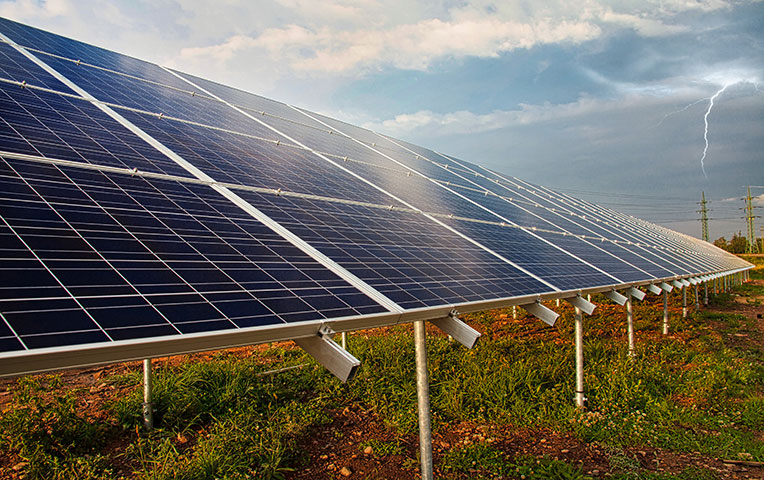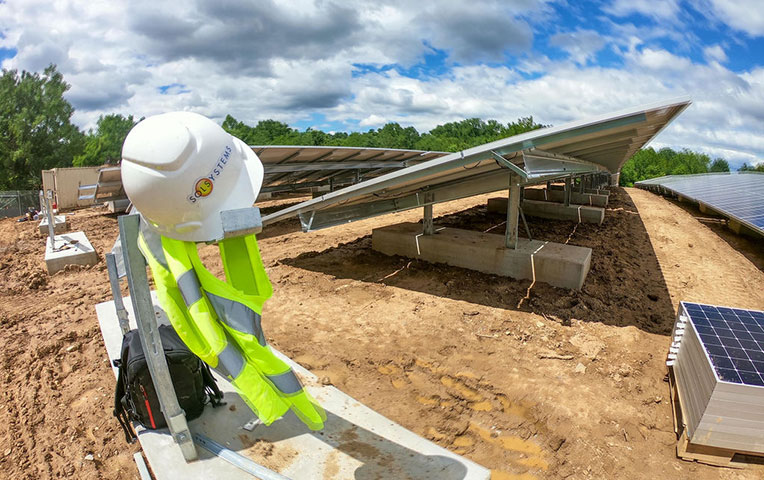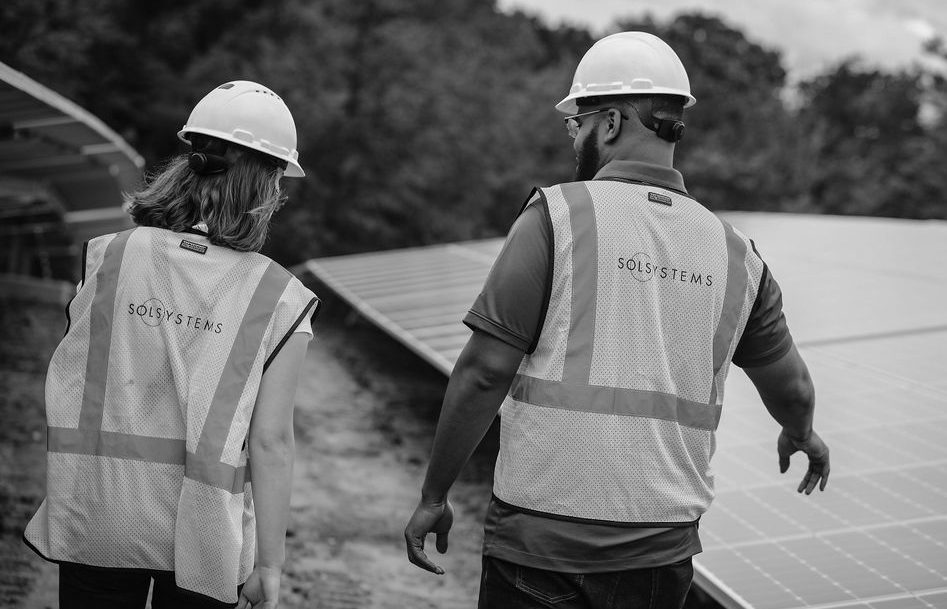Every year, we put pen to paper to share our thoughts on the direction our industry is headed. In previous years we focused on opportunities: reduced module costs resulting from underlying shifts in manufacturing and commodity prices, the long-term promise of solar energy indicated by strong demand from corporate customers, and the need for the federal government to focus on pragmatic approaches to scaling American transmission infrastructure. This year we focus on current risks we think are critical for our industry to understand.
Background
There is overwhelming and increasing demand for renewable energy in the United States, and for solar energy in particular. A majority of Americans, independent of political affiliation, support renewable energy. Leading this demand are large corporations that are transitioning to renewable energy on behalf of their employees, their customers, and their shareholders. Solar is now the least expensive form of electricity in the world, and it is the single largest source of new electrical capacity installed in the United States.[1]
Today, the solar industry won a huge victory when the Biden administration announced a two-year pause on new tariffs against solar modules imported from Southeast Asia. Details about the policy are still developing, but the move is viewed as a response to concerns about the Department of Commerce’s ongoing anti‑dumping and countervailing duty (AD/CVD) investigation into the same products. The change is prophylactic—regardless of the outcome of the AD/CVD investigation, any resulting tariffs will not impact modules imported during the next 24 months. It is also narrow, leaving Section 201 and other existing tariffs and trade restrictions unaffected. In the same announcement, the administration also said it will invoke the Defense Production Act to support the long-term development of domestic solar manufacturing capacity.
The administration’s announcement signals exactly the long-term policy strategy that many of us have been advocating for years, and it’s a massive win for the industry. But important challenges remain: (1) supply-chain disruptions caused by COVID‑19 and forced-labor concerns; (2) a suspension of new interconnection in PJM, one of the country’s most important markets; and (3) an inflationary environment that increases the cost of capital for renewable energy infrastructure.
1. Supply-Chain Issues
Across almost every sector, COVID-19 has dramatically reduced available labor and industrial manufacturing capacity since 2020, especially in Southeast Asia and China. Production of solar modules, trackers, and other critical equipment was no exception.
The price of polysilicon, the raw material used to produce solar modules, has tripled in the last 24 months. Shipping costs have increased by $20,000 per container, or around 600 percent, during the same period. Shortages of semiconductor chips, which are critical for a wide variety of modern goods including for electrical inverters, have increased delivery lead times by six months. (Anyone looking to buy or sell a car has noticed this shortage.) And of course, the rising prices of steel, aluminum, and copper have hampered the entire global economy, increasing balance-of-system costs by 6 cents/watt, or 30 percent.
Another important, and complicating factor, is the Uyghur Forced Labor Prevention Act (UFLPA) which was signed into law on December 23, 2021. The UFLPA was designed to prevent the import of products made with forced labor in China by establishing a rebuttable presumption that any goods mined, produced, or manufactured, even in part, in the Xinjiang Region of China are prohibited from entering the United States.
The UFLPA could apply to many of the materials used to manufacture solar modules, including glass, aluminum frames, and other components. Because implementation guidance remains outstanding, uncertainty remains due to traceability risk exists, further driving up costs and limiting availability. This uncertainty, combined with the risk of new tariffs and the effects of COVID-related shutdowns, has frozen the supply of Chinese and Southeast Asian solar modules bound for the US market.
2. Interconnection in PJM
In addition to significant tariff risks and price increases, the solar industry must also grapple with interconnection delays. PJM is the largest Regional Transmission Organization (“RTO”) in the U.S., spanning from New Jersey to parts of Illinois and down through North Carolina. PJM also includes the largest concentration of data centers in the world. This makes PJM the single most important electricity market for corporate customers globally, which in turn drive demand for over 25 percent of the utility-scale solar projects in the country.
PJM is in charge of grid interconnection for the many electric generators located throughout its territory. Over the last five years, the number of applications for interconnection in PJM has grown exponentially, primarily driven by applications from new solar projects. During that time, PJM has failed to adopt procedures common in other regions capable of accommodating the increased demand. As a result, the RTO’s interconnection process, originally designed to serve a relatively small number of new and very large coal and natural gas plants per year, has collapsed. In response, PJM has been forced to declare a moratorium on new interconnection applications for nearly two years while it transitions processes. This will affect over 1,000 projects, 95 percent of them solar, for years.
The impacts of these delays are significant. Every year, solar developers invest millions of dollars of at-risk capital with landowners, utilities, regulators, and other stakeholders with the expectation of eventually bringing their projects online. These developers must now wait until at least 2025 to find out whether their projects will be allowed to interconnect, and at what cost. Corporate customers working with these developers are similarly struggling to understand whether the projects they have contracted power from will be built, and whether these corporations will have access to the clean energy they had planned for.
Developers should ensure that they have appropriate liquidity to manage portfolios that may now take longer to develop. To adjust, some developers may have to sell portions of their portfolios or partner with those that have access to longer-dated capital.
The impact of these delays on customers will also be significant. Data centers consume between three and four percent of the electricity generated in the United States, and over 90 percent of all internet traffic flows through data centers located in PJM. Corporate customers targeting 2025 to meet their renewable electricity goals, and those with 24/7 goals in particular, will have to collaborate with developers as to how to mitigate these delays.
3. Inflation
For over a decade, the US has benefited from a combination of historically low interest rates and historic economic growth. In the last 24 months, governments have made significant capital injections into the global economy to incentivize growth and protect against a downturn during the COVID-19 pandemic. This has enabled corporations and investors to secure substantial amounts of low-cost debt to scale their businesses and investments, in turn enabling long-term growth in equity markets. There is no question that this environment has helped to power the development and construction of renewable energy assets, which have significant upfront costs but long-duration financial benefits.
Unfortunately, that same environment, together with pandemic-led disruptions and Russia’s invasion of Ukraine, has triggered inflation not seen in the United States in 30 years. Gasoline prices are now floating above $5 per gallon, and general staples have experienced price increases of up to 10 percent. In response, the Federal Reserve is doing what it’s supposed to—raising interest rates to tamp down inflation. The Fed raised rates by 50 basis points (bps) (0.5 percent) in May, and it is poised to raise them again two or three times in the next 18 months.
As interest rates rise, so too will the blended cost of capital for infrastructure projects. We estimate that every 100-bps increase in interest rates equates to around a 10 cent/watt increase in capital costs, or a 125–150 bp reduction in returns. This estimate does not account for the increase we will very likely see in investors’ expected returns on equity. This dynamic will put additional pressure on leveraged transactions as well as on long-dated infrastructure generally.
Projects with thin cash flows, significant leverage, or floating interest rates will be challenged, because their debt-to-service ratios will shrink. Sponsor equity, where return expectations may increase as well, will have to fill the gap. Solar developers and independent power producers (“IPPs”) whose businesses are supported by corporate debt facilities will be challenged.
But while inflation certainly poses challenges for our industry, it also presents opportunities.
Operational solar projects with long-term contracts are relatively inflation-insulated, non-correlated assets with limited ongoing operation and maintenance requirements. These projects are generally positioned to weather an economic downturn better than natural gas or wind generation facilities because of their low operational expenses and zero fuel costs. Most operational solar projects will actually increase in value because their “tail value” will increase in tandem with long-term natural gas and electricity price curves.
Operational assets that are merchant (like a number of wind and hydroelectric projects are) will benefit tremendously, because they can sell into high-priced markets immediately. To take one example, pricing in PJM now regularly averages $60/MWh—that’s not peak, that’s currently average. Pricing that high is unheard of in recent history, but it will become increasingly common. If an IPP purchased a solar energy asset expecting $30/MWh, its investors are doing well.
Developers may also benefit from an inflationary environment in certain respects. An increase in power prices will accelerate the ongoing increase in PPA rates. Developers on the right side of interconnection reform in PJM or with near-term assets in their portfolio will benefit from scarcity value.
Finally, inflation might benefit corporate, municipal, and utility customers as well. An operating solar project with a PPA inked in 2020 at $35/MWh provides a significant financial hedge for these customers and supports the contention that renewable assets are cost-competitive (which they are and have been for a while). Strategic procurement leaders can quickly quantify these savings for their organizations as they also prepare them to accept higher PPA prices for new projects—which they’ll have to.
Conclusion
It would be hard to overstate these changes. Most in our industry have not experienced a prolonged macro-economic downturn, and even fewer have experienced significant inflation. Over 99 percent of the solar assets built in the United States were built in the last decade or so – and when we started Sol in 2008, less than a percent of the current national capacity was in the ground. We have built billions of dollars of infrastructure and replaced some of the most polluting coal plants in our country along the way. Lots to be proud of. But our industry is changing, and we must be ready to adapt.
Supply-chain issues have raised module prices by 10–15 cents per watt and have raised balance-of-system costs by an additional 5 cents per watt. Put another way, costs have increased by around 30 to 40 percent, while Commerce’s recent anti-circumvention investigation has reduced the availability of modules by 90 percent.
In addition, assuming an increase in interest rates by an additional 100 bps, the rising cost of debt alone will increase project costs by the equivalent of 8-10 cents per watt. In sum, developers are facing an overall capex cost increase of around 25–30 cents per watt, or around 30-40%. Smaller projects will have higher capex increases, but are their economics are less sensitive to these costs generally.
We estimate that each 5 cents/watt increase in capex equates to around $2/MWh in increased PPA rates given an unlevered after-tax full-term IRR of 6 percent. The 25–30 cents/watt increase in costs noted above translates to a $12–15/MWh increase in PPA prices, or an increase of 25 percent—which is exactly what is being reported in PJM, MISO, and other markets.
We urge customers and developers to work collaboratively to address these issues—most of which are not only beyond the control of developers, but beyond the control of the industry. It is a storm we all can – and must – navigate together.
[1] While solar accounted for 3% of U.S. electricity generation in 2020, the EIA (which has historically underestimated growth) projects this figure will be 20% by 2050. The Department of Energy, however, estimates that solar could account for upwards of 50% of all electricity by 2050.









